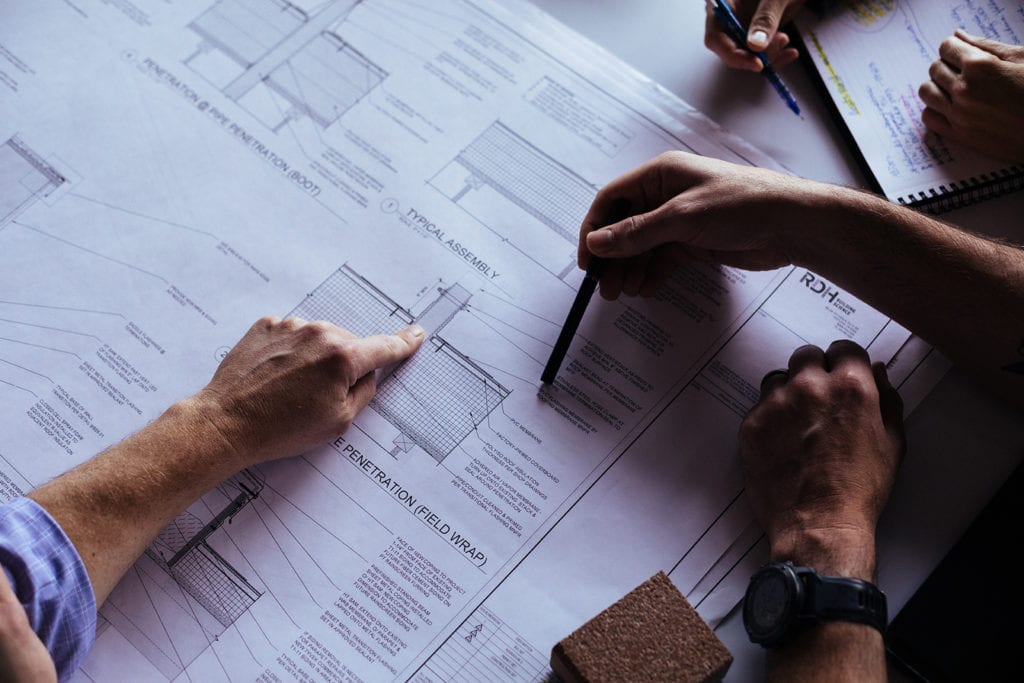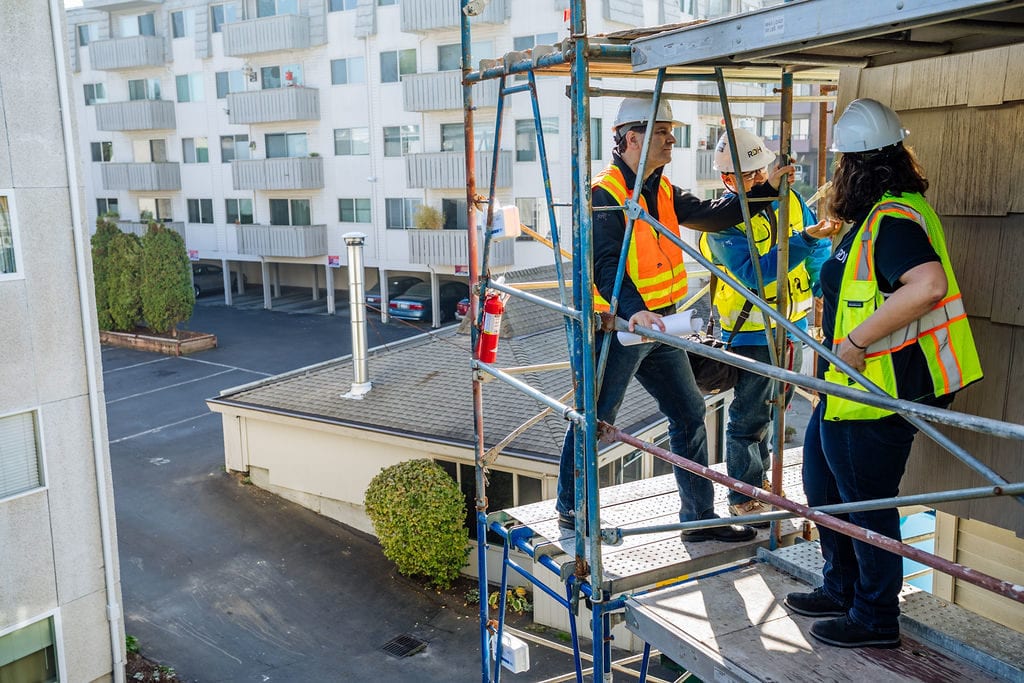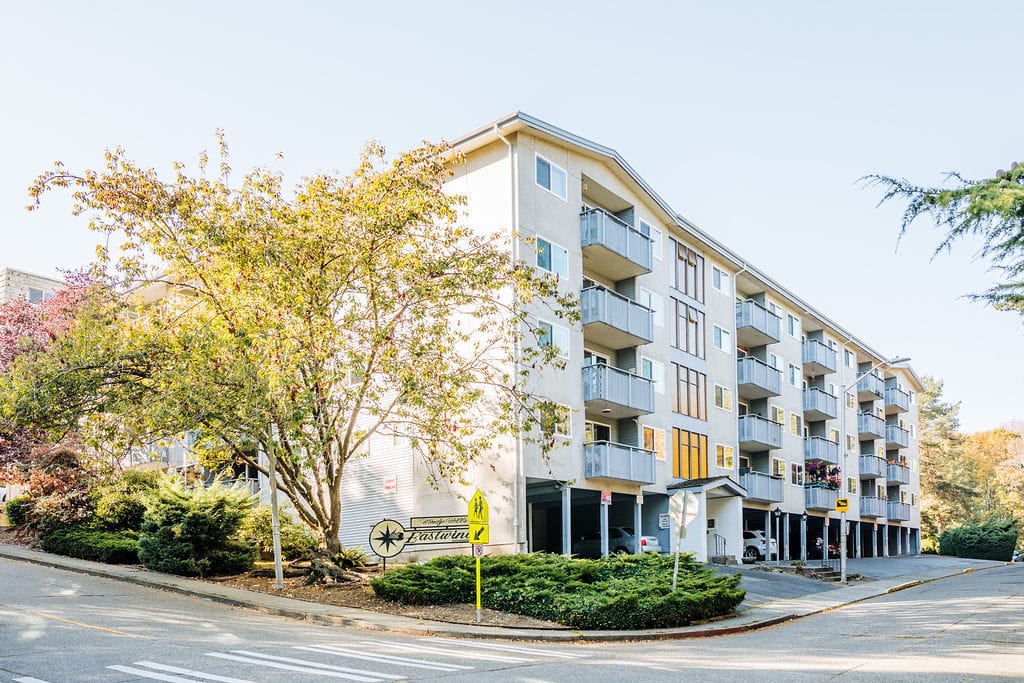A building repair or a renewal project is not something you are always prepared for or likely to welcome with open arms. And if you are not properly prepared, this type of project can become extremely costly and time consuming. However, if you understand how to get the most value out of your investment, you can make decisions that could save you time and money as well as deliver a high-quality result.
At RDH, we have been involved in the repair, renewal, and rehabilitation of thousands of buildings across North America. Our team has seen ownership groups take many different approaches—some effective, and some not so effective. Through our experience, our team has developed the following 10 strategies to help you make important decisions and get the most out of your repair dollars.
1. Get Expert Support and Advice
Seek expert support and advice in the early stages of your project. This assistance could be the difference between achieving your project’s goals or being left floundering. When selecting your building envelope consultant, choose an experienced consultant with a good reputation.
TIP: Dodge the low-budget trap by avoiding consultants who charge fees as a percentage of the construction cost.
2. Understand the Challenges Ahead
Recognize what you are up against as early as you can. Understanding your building’s problems will also open up a wide range of options for remediation and help you to make an informed decision.
TIP: Engage a professional to review or provide a condition assessment of your building to ensure you understand the challenges you are facing.
3. Be Realistic
Although it can be tempting to ignore the reality of your situation, be realistic about the scope of your project. Take some time to understand your options and make decisions based on facts, not emotions. Choosing the best solution for your building from the start will save you a lot of stress and money. Our team has seen plenty of examples of wasted time, effort, and money.
TIP: Don’t adopt a patch-and-pray approach—it often leads to more headaches and heartbreak down the road.
4. Choose a Method that Matches Your Goals
When you are choosing a method to implement building repairs, consider which of your options best suits your goals and expectations. The differences between basic administration, project management, and construction management can result in various outcomes depending on the type of work your building needs and your expectations for the project.
TIP: Decide how much support you expect from your consultant during this project and communicate your expectations to the consulting team.
5. Budget Accurately
Allocate the necessary budget to complete the project to your standards. To help develop an accurate budget, research projects that are similar to your own and compare the numbers and outcomes.
TIP: Invest enough funds to do the job right and set aside an appropriate amount for a contingency plan.
6. Plan, Plan, Plan
Take the time to develop detailed schedules, a funding strategy, and a bidding process that gives you enough time for the necessary documents to be prepared. A thorough and comprehensive plan can prevent you from being forced into making rushed and risky decisions.
TIP: Raise your project funds at the start of the design phase so you establish boundaries and expectations.
7. Prepare Supporting Documentation
Work with your consultant to define the nature of your project and ensure that high-quality construction documents are developed. Having comprehensive project specifications and details will help you pick the right contractor for the job.
TIP: Always pre-qualify contractors before entering into an agreement to ensure you are working with someone who is suited to your project.
8. Use a Competitive Process
Use a competitive bidding process with pre-qualified contractors who have proven abilities. Make sure the contractors you select are committed to providing a bid. During your initial discussions, establish labor rates and the unit cost for any extra work. Identify alternate additions and deductions to the work and have the contractor price them during the bidding phase.
TIP: Take your time to evaluate and compare the details of multiple bids—once construction begins, you will have no room to negotiate.
9. Stick with the Plan
If your project goes astray, it can pay to stick to your original plan. Challenges are bound to arise, but they can be overcome by following the original plan. Avoid any scope changes after bidding as they are usually rushed and costly.
TIP: Remember this simple rule: changes pre-bid = advantage owner, changes post-bid = advantage contractor.
10. Get What You Pay For
Make sure you are getting what you pay for by requesting quality assurance (QA) practices. By following these QA practices, your consultant will make sure the work on your building has been completed to the appropriate standards.
TIP: Some QA practices your consultant might follow include reviewing submittal and shop drawings before the materials are ordered, performing a construction field review, and doing compliance confirmation and water testing of the work in progress.
By implementing these strategies in your approach to a building repair project, you will give yourself the best chance of successfully completing your project. If you or your building ownership is taking on a repair, renewal, or rehabilitation project, get in touch with us so that we can help you recognize your options and identify where you should be investing your repair dollars.





